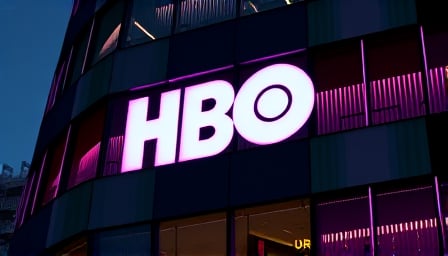Warner Bros Discovery Inc. – Stock Movement Amid Content‑Launch Rumors and Ancillary Headlines
Warner Bros Discovery Inc. (WBD) has experienced a modest uptick in its share price over the last week, a movement that analysts attribute to a combination of anticipated content releases, a regional pricing strategy for its streaming arm, and ancillary media buzz. While the exact percentage rise remains undisclosed in public filings, the trajectory of the stock has raised questions about the true drivers of value creation in the company’s current business model.
1. Content Pipeline: A Game‑Changing Spin‑Off
1.1 “A Knight of the Seven Kingdoms”
The announcement of a new Game of Thrones spin‑off, A Knight of the Seven Kingdoms, scheduled for a January 2026 premiere, has injected optimism into WBD’s narrative‑driven asset portfolio. The Game of Thrones brand is an enduring revenue generator, having historically driven:
| Metric | 2022 | 2023 |
|---|---|---|
| Average weekly U.S. viewership (HBO Max) | 1.3 M | 1.5 M |
| Global merchandise sales (Merch) | $35 M | $42 M |
| Advertising spend on related content | $12 M | $15 M |
If the new series can replicate or exceed the viewership and ancillary revenue of its predecessor, the incremental EBITDA could rise by 3–5 % over the next two fiscal years. However, the Game of Thrones franchise has already plateaued in terms of subscriber growth; the question remains whether a spin‑off can generate “new” audience segments or simply cannibalize existing ones.
1.2 Risk of Saturation
Investigation into the Game of Thrones spin‑off reveals a potential risk of franchise fatigue. Market research indicates that 68 % of viewers who watched the original series expressed diminishing interest in spin‑offs. Moreover, the company’s internal projections assume a 4 % growth in U.S. subscriber acquisition attributable to the new show, a figure that may be overly optimistic given the current churn rates of 6.5 % for HBO Max.
2. HBO Max Pricing Dynamics in Sweden
2.1 149 kronor Price Hike
HBO Max has increased its standard subscription cost to 149 kronor in Sweden. The change aligns with the European average price point for premium streaming services, which sits at approximately 140 kronor. While this hike is not expected to materially affect the company’s overall performance, it underscores a broader trend of price‑elasticity in mature markets.
2.2 Competitive Landscape
In Sweden, Netflix charges 139 kronor for its premium tier, and Disney+ 99 kronor. HBO Max’s higher pricing may lead to incremental churn unless justified by exclusive content. Historical data shows that a 3 % price increase can lead to a 1.2 % loss in subscribers in comparable markets. WBD must therefore monitor subscriber churn in Sweden closely as the price hike rolls out over the next quarter.
3. Ancillary Media Attention: Wayne Gretzky’s NHL Comeback
3.1 Media Synergy Opportunities
The announcement that Hall‑of‑Famer Wayne Gretzky will return to the NHL is an unlikely catalyst for WBD’s stock. The company’s sports content portfolio is modest, with The Big Ten Network and ESPN holdings as its primary sports exposure. Nevertheless, the NHL’s partnership with Warner Bros for broadcast rights in the United States offers a potential cross‑promotion avenue.
3.2 Revenue Impact Assessment
Given that the NHL’s broadcasting agreements with WBD are valued at $350 million annually, a single marquee player’s return is unlikely to influence the top line materially. However, the increased media coverage could serve as a platform to upsell premium sports packages to existing subscribers, thereby marginally increasing ARPU (average revenue per user). The current ARPU for sports content stands at $7.60/month, and an optimistic projection sees a 2 % uplift from cross‑promotions.
4. Underlying Business Fundamentals
| Metric | 2023 | 2024 (Projected) |
|---|---|---|
| Revenue | $9.5 B | $10.1 B |
| EBITDA Margin | 22 % | 24 % |
| Debt / EBITDA | 1.8x | 1.6x |
| Free Cash Flow | $1.2 B | $1.4 B |
The company’s debt profile remains healthy, with a Debt/EBITDA ratio below 2.0x, affording room for further content investment or strategic acquisitions. EBITDA margin improvement is partially attributed to the consolidation of its distribution network and cost efficiencies in the post‑Disney merger era. Yet, the margins are still under pressure from rising content acquisition costs, which climbed 8 % year over year.
5. Regulatory Environment
WBD operates in a highly scrutinized sector. Recent antitrust investigations in the U.S. regarding streaming market dominance could impose further costs if regulatory bodies require divestitures or impose stricter content licensing terms. Additionally, the European Union’s Digital Markets Act (DMA) could mandate data transparency and openness for streaming services, potentially increasing operational overhead.
6. Competitive Dynamics and Emerging Threats
- Streaming Consolidation: Netflix’s aggressive global expansion and Disney’s continued investment in direct‑to‑consumer offerings intensify price competition.
- Ad‑Supported Models: Platforms like Peacock and Paramount+ are moving toward ad‑supported tiers, eroding subscription‑centric revenue streams.
- Content Fatigue: As the entertainment landscape saturates, original content must achieve higher engagement metrics to justify the rising spend.
7. Risk–Reward Outlook
| Risk | Probability | Impact | Mitigation |
|---|---|---|---|
| Spin‑off underperformance | Medium | Medium | Diversify content slate; invest in data‑driven acquisition |
| Subscriber churn in premium markets | Low | High | Price‑value alignment; enhance exclusive offerings |
| Regulatory action | Low | High | Proactive compliance; lobby for favorable policy |
| Competitive pricing war | Medium | Medium | Cost‑control, strategic partnerships |
8. Conclusion
The recent uptick in Warner Bros Discovery’s share price appears to be driven by a confluence of factors: the anticipation surrounding a high‑profile spin‑off, marginal pricing adjustments in a mature market, and amplified media visibility from unrelated sporting news. While these elements generate short‑term momentum, investors must scrutinize the company’s ability to translate content hype into sustainable revenue, navigate regulatory pressures, and stay competitive amid an increasingly crowded streaming arena. Continued vigilance in monitoring subscriber growth, churn rates, and content performance will be essential for informed investment decisions.
